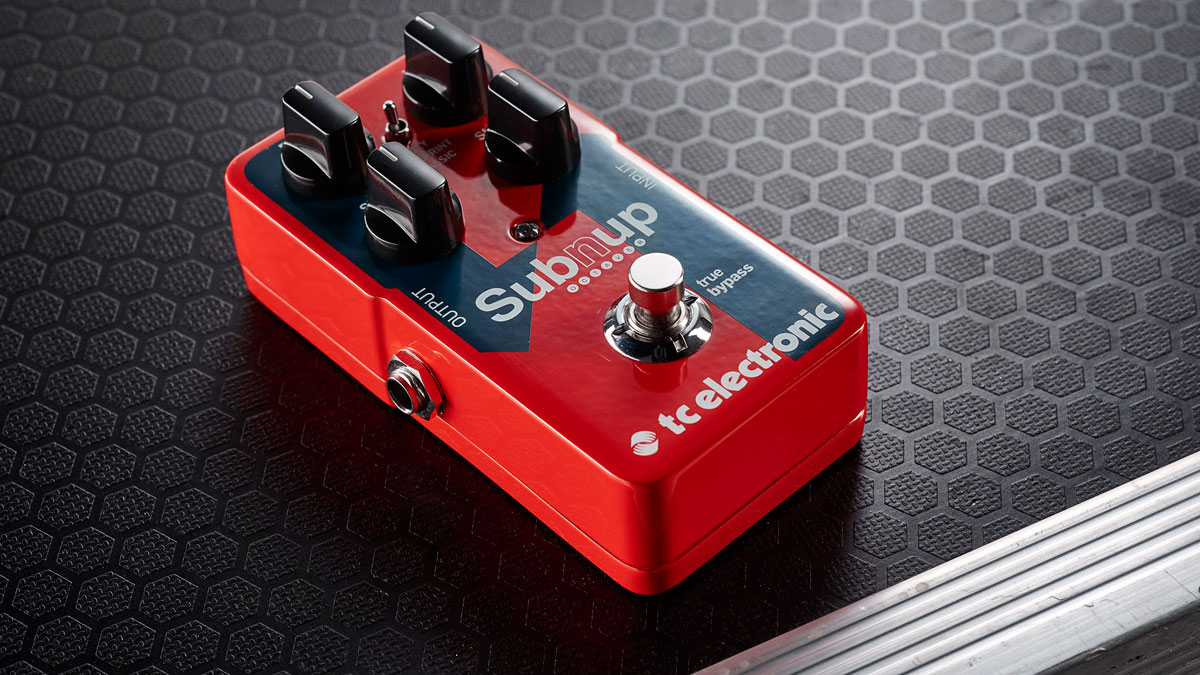MusicRadar Verdict
This easy-to-use pedal is small enough to slot into most pedalboard scenarios and costs a lot less than the immediate competition while offering more versatility.
Pros
- +
Three separate octaves with clean tracking; TonePrint facility to create a wide variety of sounds; compact; low cost.
Cons
- -
Separate outputs for the dry sound and the octaves might have enhanced the versatility.
MusicRadar's got your back
Polyphonic octave pedals have taken off in the last few years and now TC Electronic has joined in the fun with the Sub 'N' Up, a pedal capable of adding up to three additional octaves to your dry signal - one up, one down and two down.
This pedal, however, goes beyond the sound of straight octaves thanks to TC's TonePrint facility, which allows you to zap factory or artist-created presets into the pedal, or alternatively create your own using the editing software.
Sounds
Operation of the Sub 'N' Up is pretty straightforward: you get individual knobs for each of the four signals, so you can create your own blends. A three-way toggle switch sets the mode you work in, the first of which is Poly, which offers polyphonic octaving, so can work equally well on chords or single notes.
Here, you can start with subtle enhancement of the dry signal - just a touch of single or multiple octaves added in can give you a fuller, more dimensional sound. Higher settings of the octave knobs can yield the illusion of guitar and bass playing in unison or offer layered octaves for some truly massive sounds, considerably empowered through fuzz/distortion or an overdriven amp.
A more pragmatic approach can see the high octave knob set somewhere in the higher regions of its travel for delivering a passable impersonation of a 12-string that can be thrown into a song for extra flavour.
The Classic mode offers the sort of old-school monophonic octave shifts associated with vintage octave pedals (complete with glitching if you attempt to play chords) and is great for huge, tightly-tracked Seven Nation Army-style riffs or if you're just wanting to play basslines on a standard guitar.
It's all good, but what really unlocks the pedal's potential is the TonePrint capability, which can add modulation into the sonic equation. Here, you'll find organ sounds or be able to mix in, say, flanging or overdrive for an eclectic array of alternative tones.
Want all the hottest music and gear news, reviews, deals, features and more, direct to your inbox? Sign up here.
It's the perfect tool for stoner rock and metal players looking for the sound of doom, and proggers, fusionists, experimentalists, noiseniks and those guitar-and-drum duos who like to create a much bigger sound than two people should reasonably be expected to.
Trevor Curwen has played guitar for several decades – he's also mimed it on the UK's Top of the Pops. Much of his working life, though, has been spent behind the mixing desk, during which time he has built up a solid collection of the guitars, amps and pedals needed to cover just about any studio session. He writes pedal reviews for Guitarist and has contributed to Total Guitar, MusicRadar and Future Music among others.

